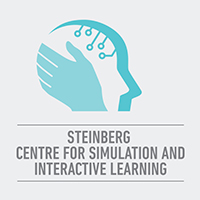Funding : The Social Sciences and Humanities Research Council of Canada
Principal Investigator: Prof. Jason M. Harley
Co-PIs: Prof. Reinhard H. Pekrun and Prof. Allyson F. Hadwin
Co-Investigators: Prof. Ryan N. Brydges, Prof. Mariel F.W. Prof. Miller, Prof. Hanna J盲rvenoja, Prof. Maria Cutumisu, and Prof. Nikki Lobczowski
Collaborators: Dr. Gerald M. Fried, Dr. Jeffrey G. Wiseman, Dr. Ning-Zi Sun, and Dr. Elene Khalil
Partners: The Royal College of Physicians and Surgeons of Canada, The Wilson Centre (University of Toronto), Adoc Talent Management Inc., Canadian Association for Graduate Studies, Research Institute of the 平特五不中 Health Centre, and 平特五不中 internal partners (Steinberg Centre for Simulation & Interactive Learning, Institute for Health Sciences Education, and Teaching & Learning Services)
Project Description:
The 21st Century workplace is an increasingly interconnected one where collaborating with others颅鈥攐ften from different cultures, and geographic backgrounds鈥攊s essential. Educational curricula acknowledge the importance of interpersonal skills but underlying them is the ability to regulate one's own and others' cognitive and emotional processes with competence, versatility, and sensitivity. Related educational research is presently exploratory in nature as researchers grapple with the theoretical, methodological, and analytical complexity of these two distinct but inter-related processes and the way they are woven together in group dynamics.
We aim to address the above-mentioned gaps by (1): Validating and examining the efficacy of our newly developed self-report and observational measures of cognitive and emotional regulation for teams. (2) Develop a unified set of best practices for collecting and analyzing multimodal data (video, self-report, physiological sensors, automatic facial recognition software) that examines cognitive and emotional regulation in multiple contexts. And (3) Advance educational theory and practice by identifying patterns of convergence or divergence in cognitive and emotional regulation by contrasting findings across multiple contexts that vary along several key dimensions including: type of learner (e.g., undergraduate student, medical resident, medical student) and learning environment (e.g., online versus offline, use of simulation).
